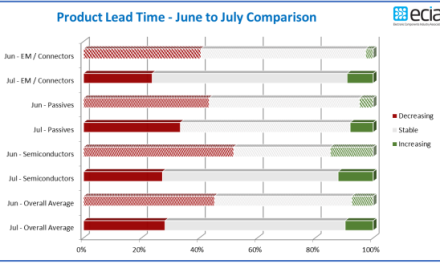iPhone Xs Max Costs Apple $20 More in Materials Than Last Year’s Smaller iPhone X, IHS Markit Teardown Reveals
While most of the components have been upgraded, the physical smartphone design remains relatively unchanged from the previous iPhone X version
LONDON –The teardowns and cost benchmarking team at IHS Markit has completed its preliminary physical review of the new Apple iPhone Xs Max. The model A1921 version of the smartphone sold in North America comes with 64 gigabytes (GB) of NAND memory and carries a bill of materials (BOM) of $390, which is just $20 higher than the BOM for last year’s smaller iPhone X.
With a starting price of $1,099, this year’s 6.5-inch iPhone Xs Max costs consumers $100 more than the last year’s 5.8-inch iPhone X. As another point of comparison, the Samsung Galaxy S9+ equipped with 64 gigabytes (GB) of NAND flash memory (model number SM-G965U1) carries a BOM cost of $375.80 and retails at around $840.
“Overall, the iPhone Xs Max represents an ‘s-year upgrade,’ whereby the physical smartphone design remains relatively unchanged from the previous iPhone X version released in 2017, but most of the core components have been upgraded,” said Wayne Lam, principal analyst for mobile devices and networks at IHS Markit. “For example, SDRAM increased from 3 gigabytes last year to 4 gigabytes this year, the A12 applications processor features the latest 7 nanometer manufacturing by TSMC, and additional LTE band support has been added to the gigabit LTE radio-frequency front-end design.”
A deeper look inside iPhone Xs Max
The iPhone Xs Max includes a new 6.5-inch organic light-emitting diode (OLED) display supplied by Samsung Display. LG Display is a secondary supplier to Apple for this particular display, according to the latest intelligence from IHS Markit. The overall touchscreen display cost of $120 is similar to last year’s iPhone X 5.8-inch display pricing. This price point indicates that there has been some non-trivial price erosion of the OLED displays between last year’s 5.8-inch OLED display and this year’s 5.8-inch version, which Apple apparently did not pass on to consumers. Also new this year is the 120Hz refresh rate for the touch overlay in both OLED display models, which is twice as fast as the refresh rates on all previous iPhones. “Higher touchscreen-refresh rate is a new theme in the display improvement that all three new iPhones share,” Lam said. “Faster refresh rates ultimately improve user experience, as interactions with the display appear snappier and smoother.”
As expected, Intel took the sole modem slot for the iPhone Xs Max and Xs update. Now, there is only one stock-keeping unit (SKU) for the modem, which supports gigabit LTE, with 4×4 multiple-input multiple-output (MIMO) with support for all four major carriers in the US. In order to support all the global radio-frequency (RF) bands, Apple has implemented modular stacked printed circuit boards (PCBs) that can be swapped out to support other localized LTE frequencies. These modular PCBs are another design change that helps with Apple’s SKU management between the five global iPhone Xs Max models. “The move to gigabit LTE is an important one, as it brings Apple into parity with Android flagship devices,” Lam said. “Moving to a single modem supplier simplifies SKU management, and the addition of eSIM will make switching between carriers easier.”
Compared to previous Intel modem designs dating back to the iPhone 7, this latest iteration does not have any visible Qorvo radio-frequency front-end (RFFE) components, like the LTE envelope trackers (ET), since the Intel XMM7560 already contains an integrated ET. Both Skyworks and Broadcom were prominent in the increasingly complex RFFE.
Clearly visible on the stainless-steel frame are antenna segmentations forming four discrete antennae, which serve as the basis of the 4×4 MIMO LTE radio. The two smaller antenna segments correspond to the mid-to-high LTE frequencies, and they are situated at opposite corners of the smartphone in order to maximize spatial diversity. For low anchor LTE frequency use, the primary Rx/Tx antenna on the bottom, and the diversity antenna arranged in 2×2 format on top, are the same as in previous iPhone designs. This dual use of the stainless-steel antenna structure is unique to Apple, as most other gigabit LTE phones rely on patch antennas behind the rear glass to add additional LTE antennas. By virtue of this design, Apple was able to simplify the RFFE complexity and cut down on extra antenna components needed to support gigabit LTE.
Apple’s premium iPhone strategy
Apple has created more iPhone options this year, while moving its whole portfolio further up into the premium segment. “The company has completed its hardware design refresh that started with iPhone X, and has moved to an all-notch display line-up,” said Jusy Hong, research and analysis director, IHS Markit. “Features like high-refresh-rate and high-dynamic-range OLED displays, computational photography and enhanced audio recording, and improved performance for artificial reality games and other offerings, re-enforce Apple’s focus on the user experience.”
The premium smartphone market segment increased drastically, after Apple released the iPhone 8, iPhone 8 Plus and iPhone X last year. Shipment volume increased to 30.1 million and 69.8 million units in third quarter and fourth quarter of 2017, respectively, up from 16.5 million and 32.9 million in the same quarter a year earlier. As a result, the global share of premium smartphone shipments increased to 18 percent in the fourth quarter of 2017, up from 8 percent in the fourth quarter of 2016.
Apple iPhone Xs Max smartphone teardown in pictures
- Apple iPhone Xs Max
- Apple iPhone Xs Max – Exploded view
- Apple iPhone Xs Max – Interface / RF PCB (top)
- Apple iPhone Xs Max – Main PCB (top)
- Apple iPhone Xs Max – Main PCB (bottom)











